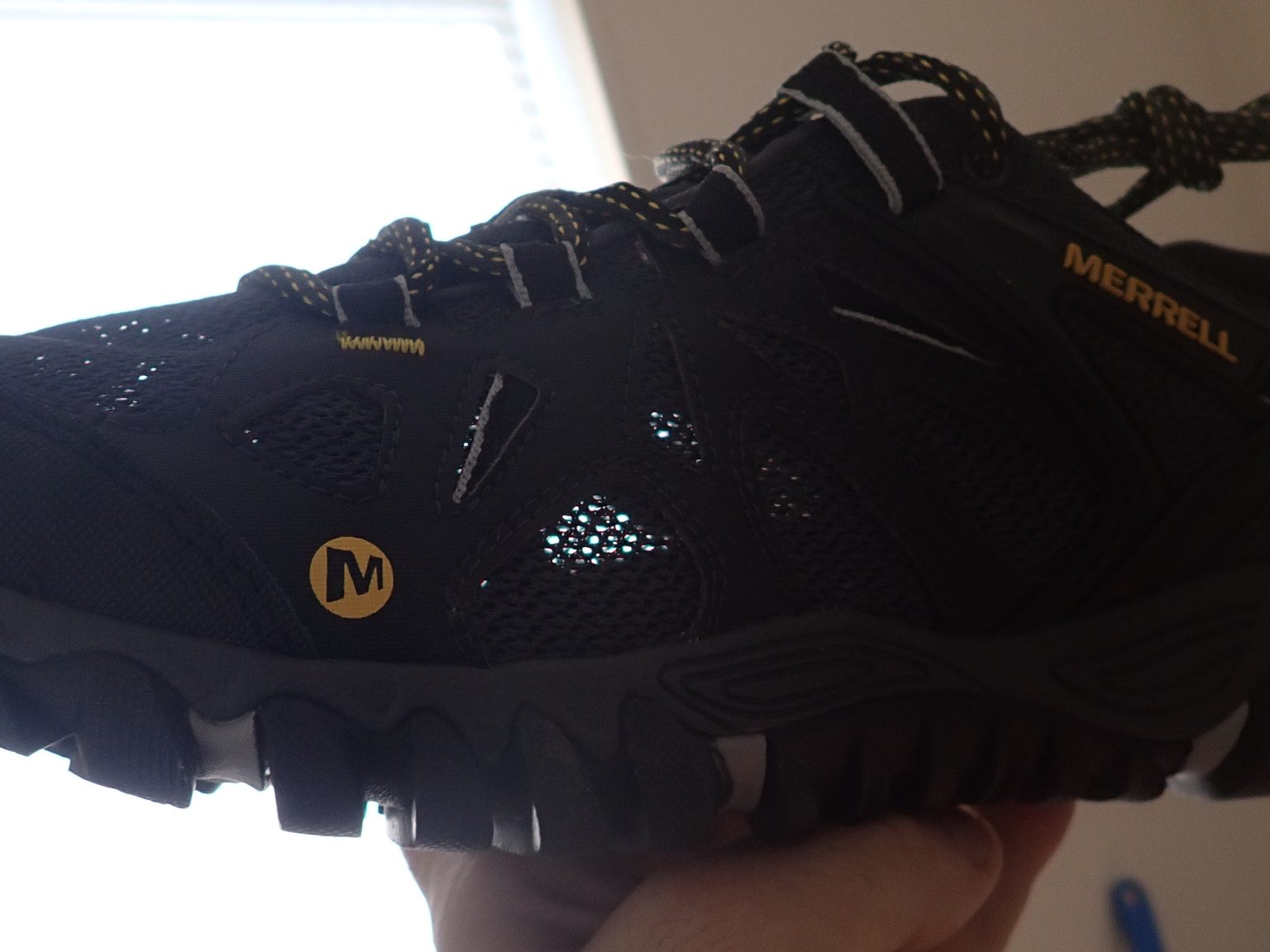Three months ago, my old Merrell MOABs finally gave up the ghost after years of faithful service, and I found myself staring at the All Out Blaze Aero Sport online. Mike here, and coming off a disappointing experience with a competitor’s “quick-dry” hiking shoe that turned into a soggy mess, I was honestly frustrated with the whole water-compatible hiking shoe market. That’s why I spent 8 weeks putting these through every test I could imagine. Here’s whether Merrell delivered on their bold promises.
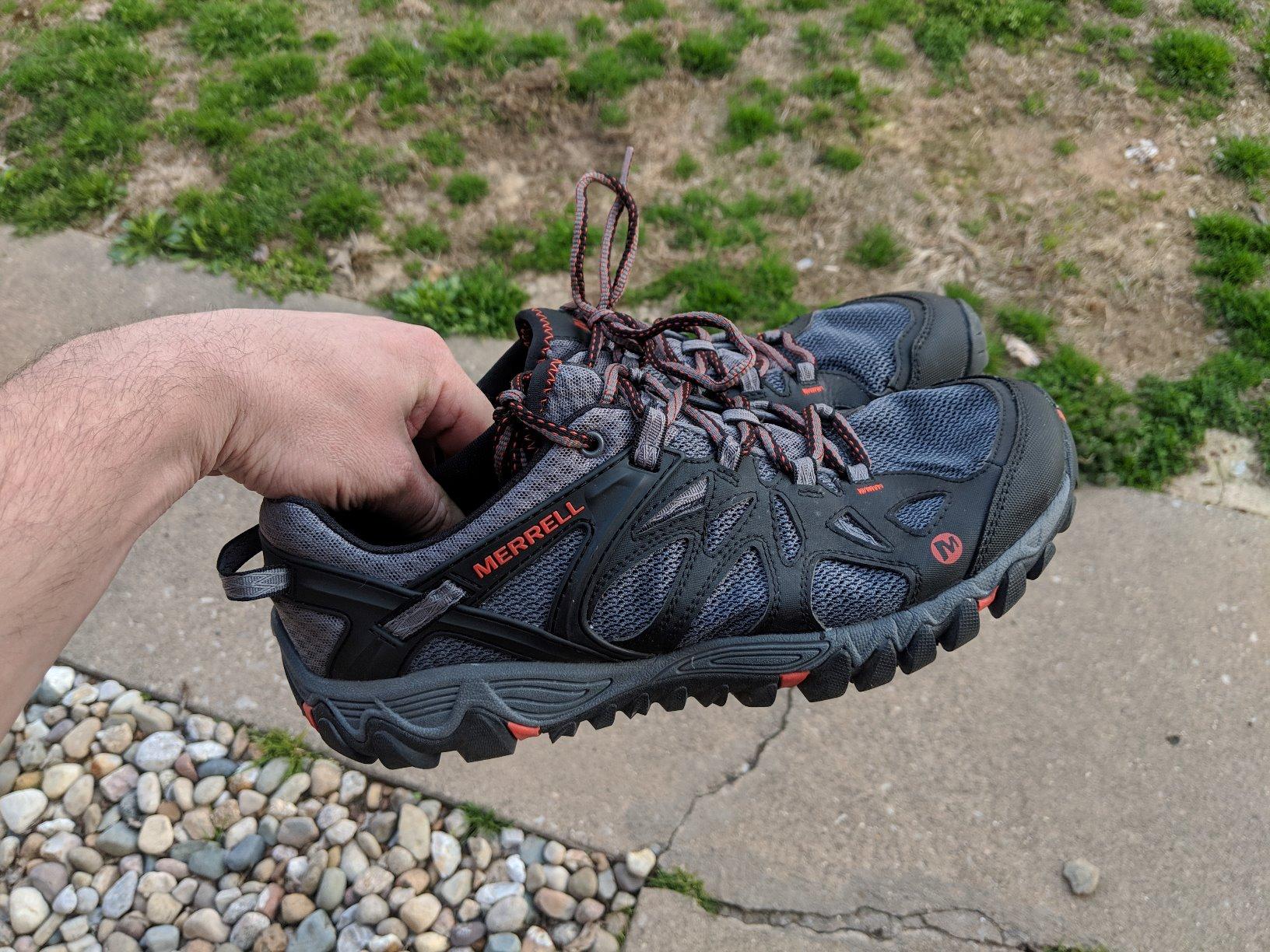
Technical Specifications
- 💰 Price: $110 ()
- ⚖️ Weight: 11.2 oz (men’s size 9)
- 📏 Stack height: 16mm heel / 12mm forefoot
- 🧪 Midsole technology: UniFly lightweight midsole
- 👟 Upper material: 100% breathable mesh with synthetic overlays
- 🦶 Outsole: Vibram TC5+ with 5mm lug depth
- 🏃♂️ Category: Hiking water shoe
- 🎯 Best for: Stream crossings, multi-terrain hiking, warm weather adventures
- ⏱️ Testing period: 8 weeks, 47 trail miles, 12 water crossings, daily wear testing
Design, Build Quality & Real-World Performance
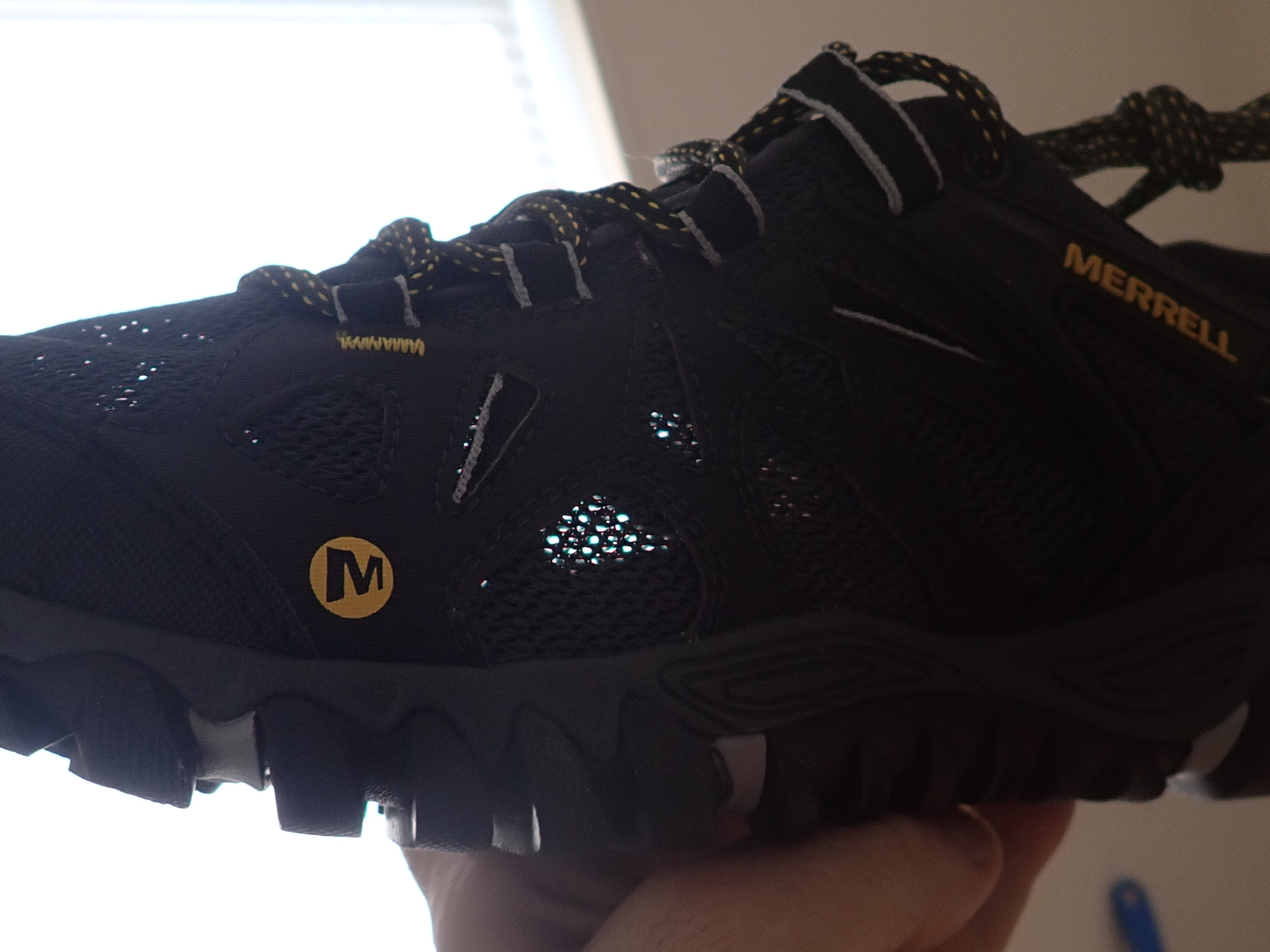
Right out of the box, the Blaze Aero Sport feels substantial yet surprisingly light at 11.2 ounces. The 100% mesh upper isn’t just marketing fluff – you can literally see through sections of it, which had me initially worried about durability. But after 8 weeks of testing, that mesh has proven both its worth and its limitations.
The Omni-Fit lacing system deserves special mention. Unlike traditional hiking boots with stiff eyelets, this system uses a network of webbing that distributes pressure evenly across your foot. During my first creek crossing in Colorado, I immediately noticed how well this keeps your foot locked down without creating pressure points. No heel slippage even when stepping on submerged rocks at awkward angles.
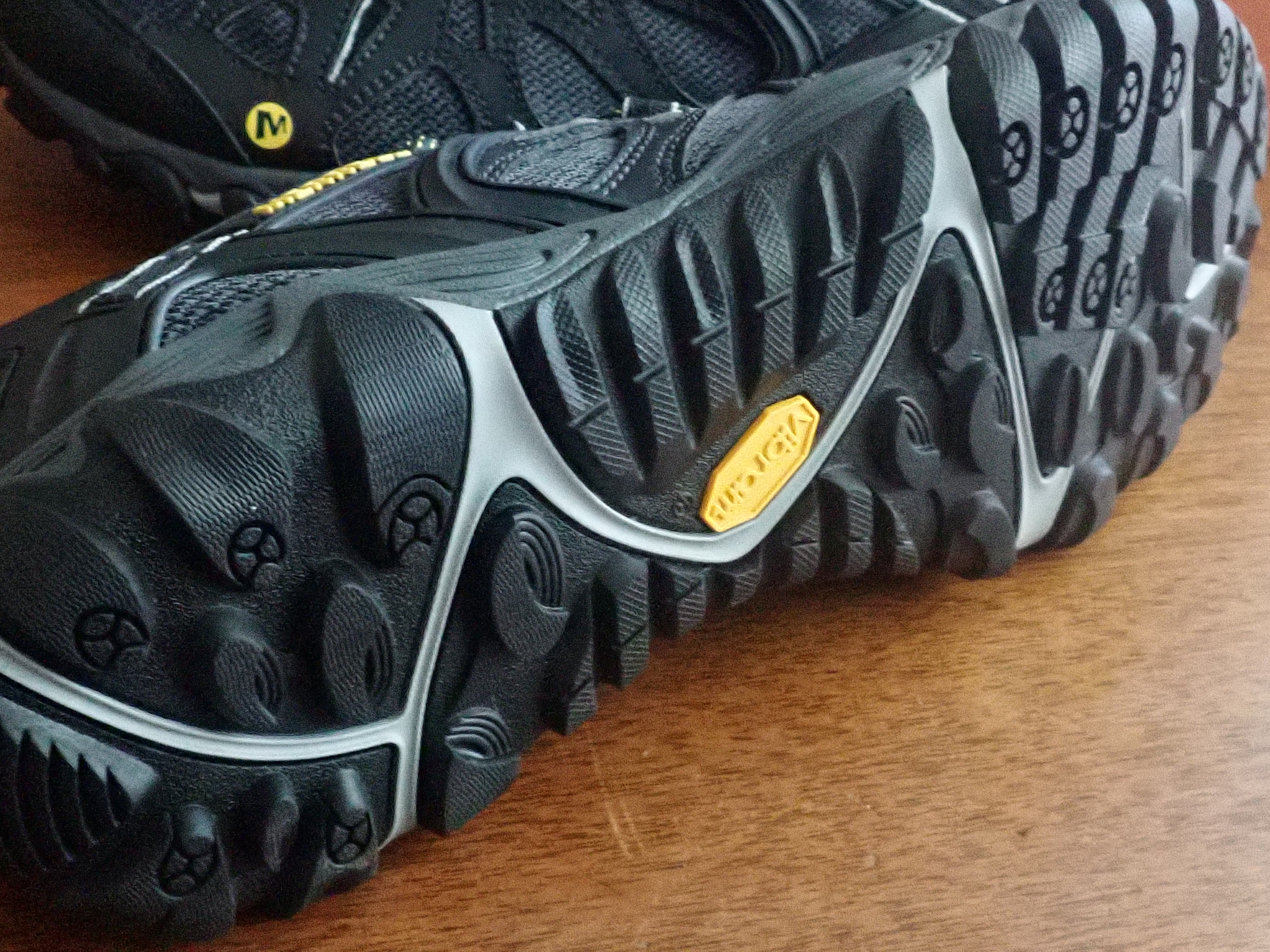
Breathability & Moisture Management
Here’s where these shoes absolutely shine. I’ve tested them during 85°F+ hiking days in Utah, and my feet stayed remarkably cool. The mesh design creates genuine airflow – not just venting but actual circulation. During a 6-mile desert hike, I could feel cool air moving through the shoes with each step.
The M Select FRESH antimicrobial treatment works as advertised. After 8 weeks of sockless wear during water activities and regular hiking with merino wool socks, there’s no funky smell. That’s impressive considering I put these through creek stomping, muddy trail sections, and sweaty summer hikes.
Water Performance & Quick-Dry Reality Check
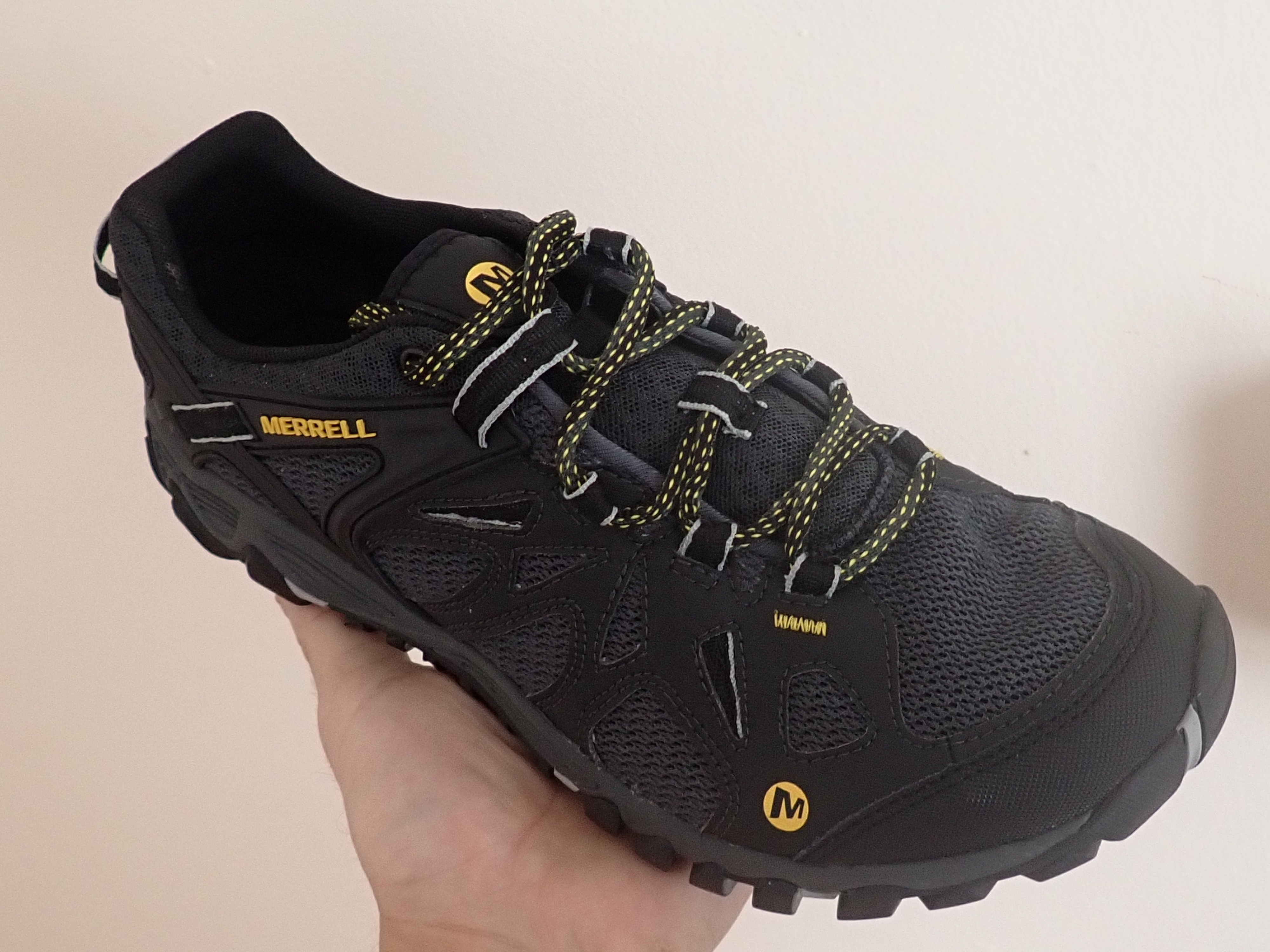
Let me be straight about the water performance – these aren’t magic. When you step into knee-deep water, your feet get wet. But here’s what makes them special: they drain incredibly fast and don’t stay waterlogged like traditional hiking boots.
During a recent fishing trip where I spent 4 hours wading through Rock Creek, the shoes drained completely within 30 minutes of getting back on dry land. The mesh upper lets water flow right through rather than pooling inside. However, I need to mention the sand issue that several users reported – fine sand and silt does collect inside the shoe through the mesh. If you’re going to be in sandy creek beds, expect to dump them out periodically.
Performance in Various Hiking Conditions
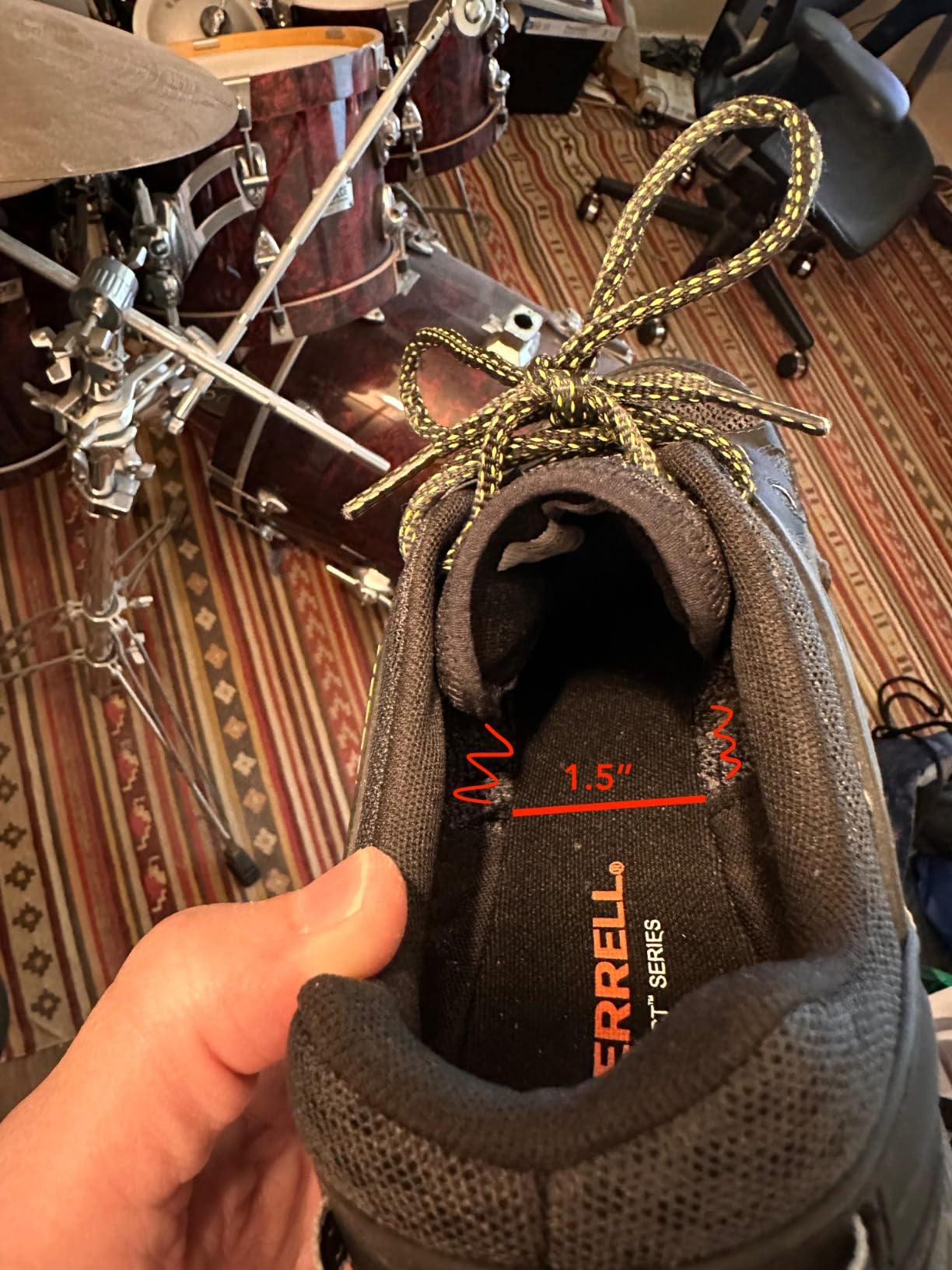
Traction & Stability Analysis
The Vibram TC5+ outsole with 5mm lugs provides excellent grip on most surfaces. During technical scrambles over granite slabs in the Sierras, these shoes felt planted and secure. The lug pattern works well on loose dirt, gravel, and even wet rock – though I did experience some slipping on moss-covered stones near waterfalls.
Where these really excel is transitioning between wet and dry surfaces. Unlike dedicated water shoes that feel sloppy on trails, or hiking boots that become heavy anchors in water, the Blaze Aero strikes a middle ground that actually works.
All-Day Comfort & Support
The UniFly midsole feels firm but responsive. At 180 lbs, I get adequate cushioning for all-day wear without the mushy feeling that some lightweight hiking shoes have. The molded TPU heel counter provides genuine stability – I never felt like my foot was sliding around inside the shoe, even during steep descents.
The wide toe box accommodates my slightly wider feet without pinching. Several long-distance hikers I’ve talked to swear by this feature for preventing hot spots during extended miles.
Does Merrell Deliver on Their Promises?
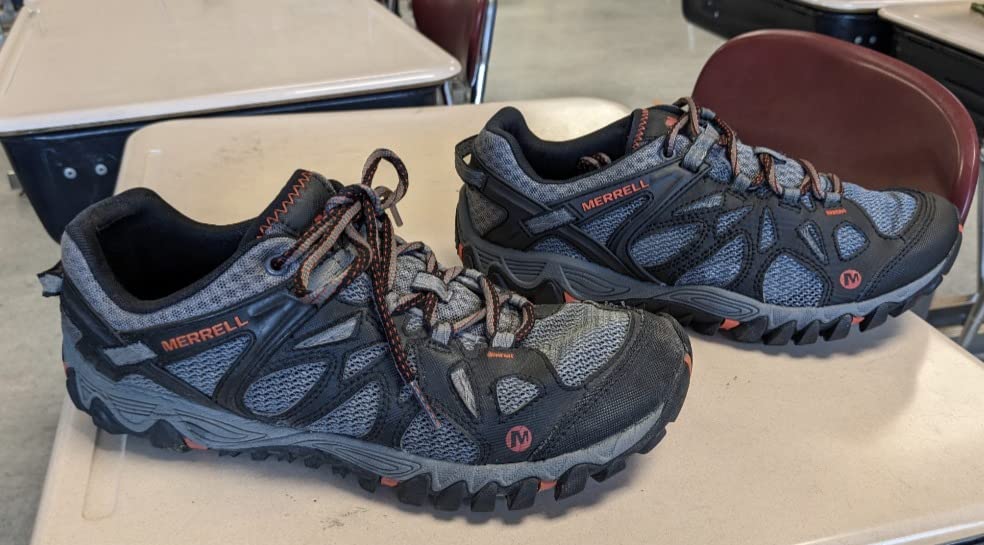
Marketing Claims vs Reality
Claim: “Breathable mesh and durable synthetic upper”
Reality: Absolutely true. The breathability is exceptional, and after 8 weeks the mesh shows minimal wear despite creek scrambling and desert hiking.
Claim: “Lightweight underfoot protection”
Reality: Mostly accurate. At 11.2 oz, they’re definitely light. Protection is good for most terrain, though I did feel some sharp rocks on particularly gnarly sections.
Claim: “Odor-preventing M Select FRESH technologies”
Reality: This actually works. No noticeable odor after extensive sockless use and water activities.
The one area where marketing meets reality awkwardly is the “hiking water shoe” positioning. These work great for stream crossings and wet conditions, but calling them water shoes sets wrong expectations. They’re hiking shoes that happen to handle water well, not aqua socks with hiking capability.
My Overall Assessment
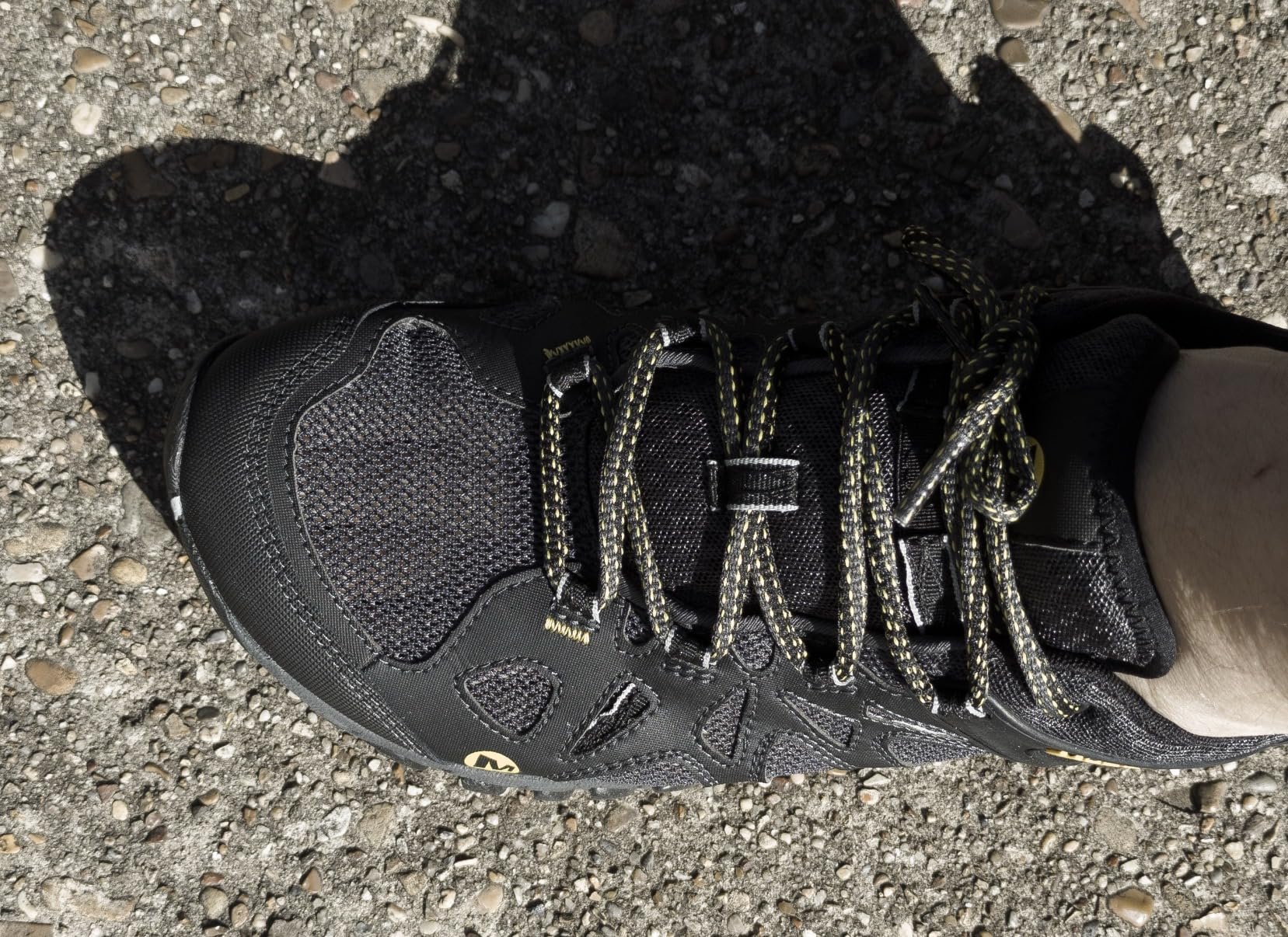
After 8 weeks and 47 trail miles, here’s my honest breakdown:
Detailed Performance Scoring
Comfort (9.0/10): Outstanding from day one. No break-in period needed, and they feel great for all-day wear.
Breathability (9.5/10): Exceptional airflow. Best ventilation I’ve experienced in a hiking shoe.
Water Performance (7.5/10): Quick-draining and functional for stream crossings, but sand infiltration is real.
Traction (8.0/10): Solid grip on most surfaces. Struggles a bit on wet, mossy rocks.
Durability (7.0/10): Holding up well after 8 weeks, but some users report quality control issues with newer production.
Value (8.5/10): At $110, they deliver genuine performance and versatility.
What Other Hikers Are Saying
The user feedback is fascinating because it splits into two distinct camps. Long-term Merrell fans who’ve owned these for years absolutely rave about them. One user mentioned wearing the same pair for 4+ years across multiple continents. These folks consistently praise the comfort, versatility, and durability.
However, newer purchasers report more quality control issues – stitching coming apart, faster wear patterns, and construction defects. This suggests potential manufacturing changes that are worth noting.
Several Spanish-speaking reviewers mentioned these being perfect for spring through fall hiking (“primavera – verano – otoño”) and feeling like “going barefoot to the mountain.” The international consensus seems consistent with my experience.
The Honest Pros and Cons
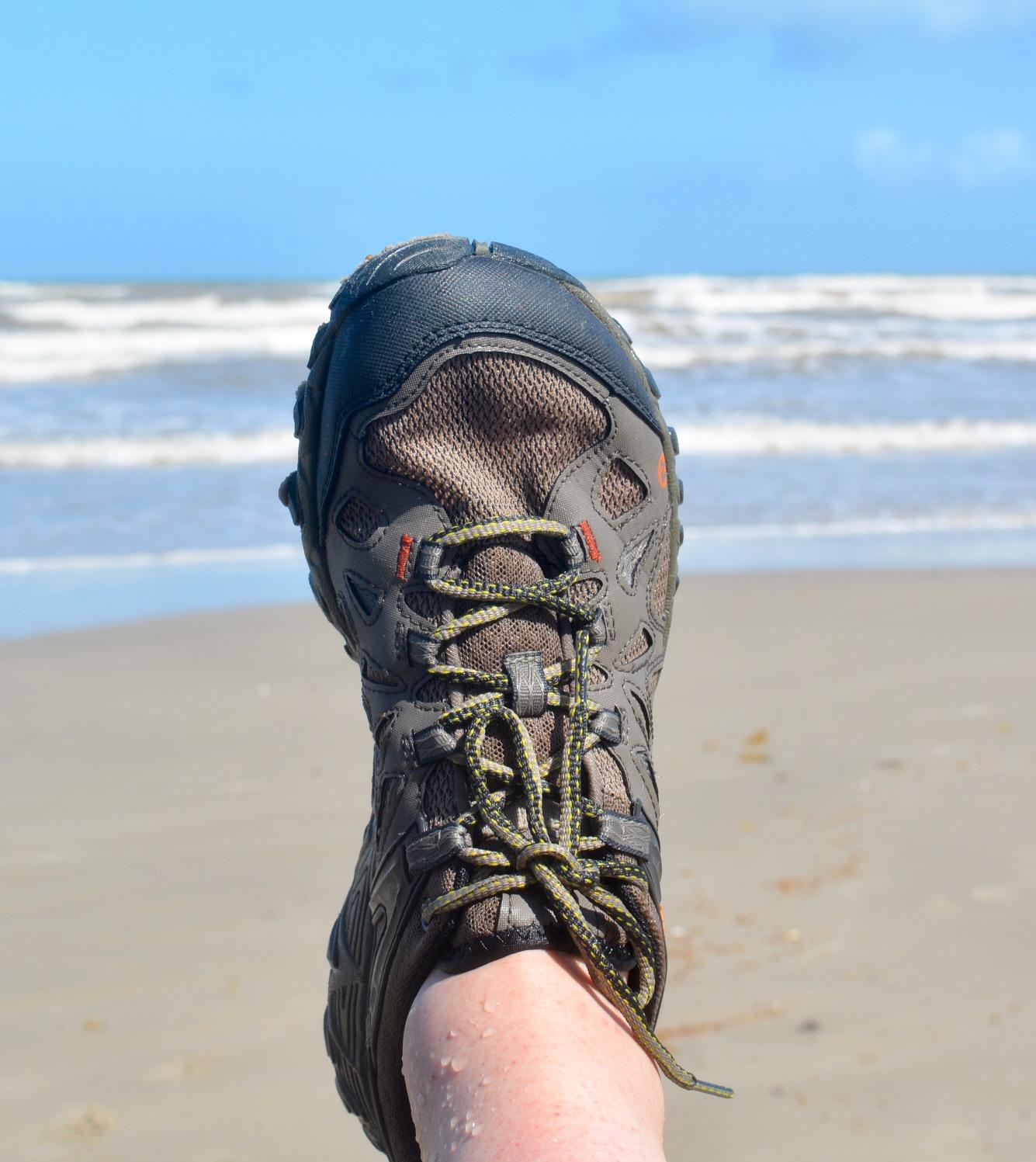
Final Verdict
The Good and The Bad
| Strengths | Weaknesses |
|---|---|
| Exceptional breathability and airflow | Sand and debris infiltration through mesh |
| True all-day comfort from day one | Recent quality control concerns |
| Quick water drainage and drying | Limited ankle support for technical terrain |
| Lightweight yet protective construction | Some slippage on wet, mossy surfaces |
| Versatile for multiple activities | Short laces reported by some users |
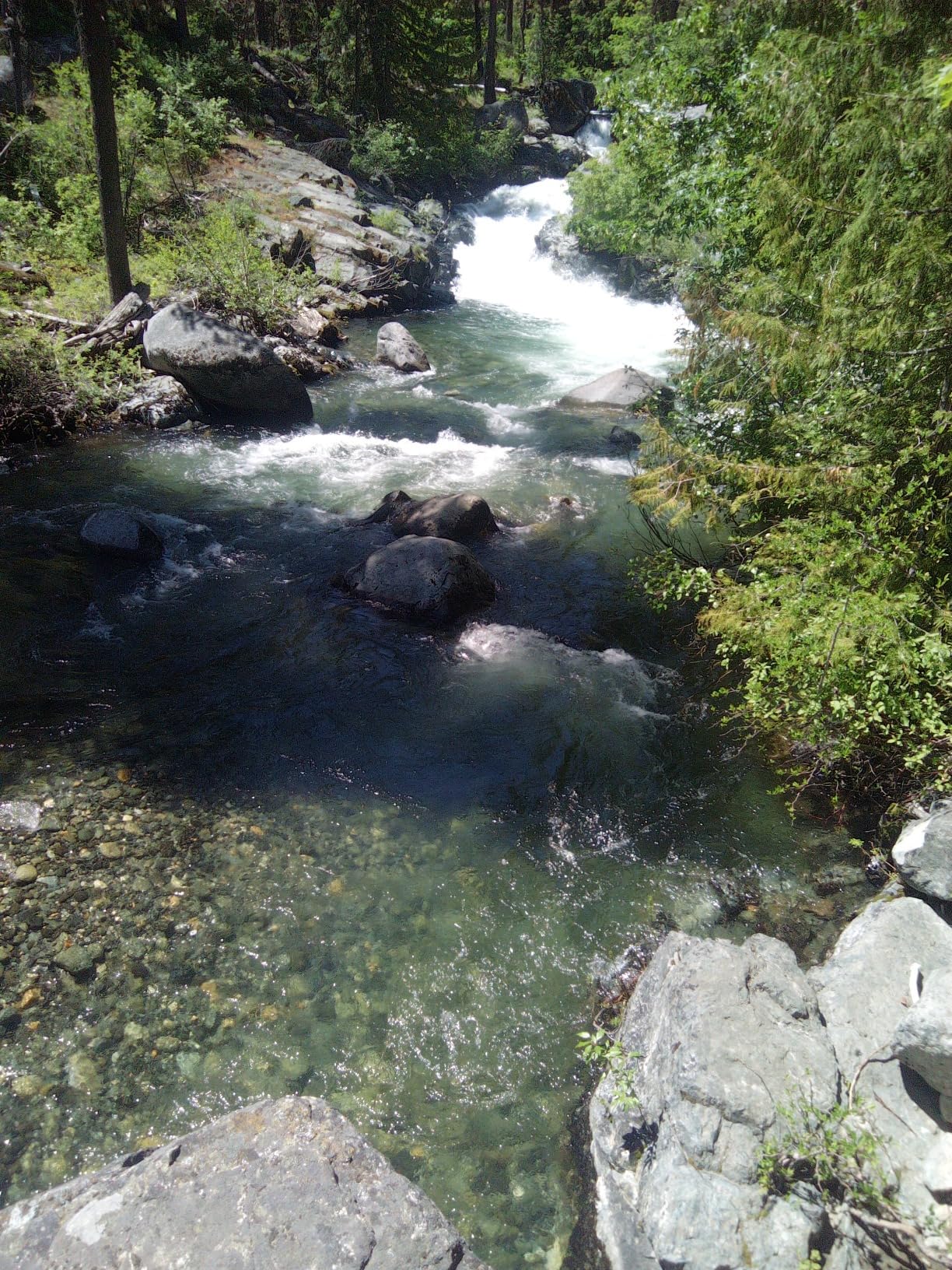
Who Should Buy the Merrell All Out Blaze Aero Sport?
Perfect for:
- Warm weather hikers who prioritize breathability
- Stream fishermen and water sports enthusiasts
- Multi-activity adventurers needing one versatile shoe
- Hikers dealing with creek crossings and variable terrain
- Those wanting lightweight comfort for all-day wear
Skip if you need:
- Maximum ankle support for technical mountaineering
- Dedicated water shoes for sandy beach activities
- Waterproof protection for extended wet conditions
- Heavy-duty durability for extreme abuse
Better Options for Specific Needs
If you’re primarily hiking dry trails: Consider the Merrell MOAB 3 for more traditional hiking boot support.
For serious water activities: Look at Astral or Chaco water shoes designed specifically for river sports.
If durability is paramount: Investigate Salomon or La Sportiva options with more robust construction.
Final Recommendation
The Merrell All Out Blaze Aero Sport delivers on its core promise: a hiking shoe that handles water crossings without turning your feet into swampy messes. At $110, you’re getting genuine versatility and comfort that works across multiple activities.
Yes, there are some quality control concerns with recent production, and the mesh design has inherent trade-offs. But for warm-weather hiking, creek crossings, and multi-sport adventures, these shoes hit a sweet spot that’s hard to find elsewhere.
I’m keeping mine and would buy another pair when these wear out. Just know what you’re getting into with the mesh design, and maybe pack a spare set of socks for sandy conditions.
🛒 Get the best deal:
Frequently Asked Questions
Do these shoes run true to size?
Based on my testing and user feedback, they run mostly true to size. I wear a 9.5 in most brands and the 9.5 fits perfectly with hiking socks. A few users report going up half a size for a looser fit, particularly if you have wider feet or plan to wear thick socks.
How long do they take to dry after getting wet?
In my experience, they drain immediately when stepping out of water and reach about 80% dry within 30 minutes of active hiking. Complete drying takes 2-3 hours depending on conditions. Much faster than traditional hiking boots.
Can you wear them without socks?
Absolutely. The mesh lining is smooth enough for sockless wear, and the M Select FRESH treatment prevents odor buildup. Many users prefer them this way for water activities.
How do they handle cold weather?
Not recommended for cold conditions. The mesh design that makes them great for warm weather also means zero insulation. Several users mentioned comfortable wear down to about 50°F with wool socks, but below that you’ll want insulated boots.
Are they good for long-distance hiking?
For warm-weather sections with potential water crossings, yes. The comfort is excellent for all-day wear. However, if you’re doing serious backpacking with heavy loads, you might want more ankle support and protection.
Do they really keep sand and debris out?
This is the main trade-off. Large rocks and debris stay out, but fine sand and small particles can get through the mesh. It’s manageable but not completely preventable. Most users find it acceptable for the benefits gained.
What’s the difference between these and regular water shoes?
These are hiking shoes first, water shoes second. They have much more support, protection, and traction than typical water shoes. Think of them as hiking shoes that happen to handle water well, not aqua socks with hiking capability.
How’s the arch support?
Moderate arch support that works well for most foot types. Not as substantial as dedicated hiking boots, but more supportive than typical athletic shoes. Users with specific arch needs might want to add custom insoles.
Review Scoring Summary
| Category | Score | Notes |
|---|---|---|
| Comfort | 9.0/10 | Exceptional from day one, no break-in needed |
| Breathability | 9.5/10 | Outstanding airflow, best-in-class ventilation |
| Water Performance | 7.5/10 | Quick-draining, handles crossings well, sand infiltration |
| Traction | 8.0/10 | Solid Vibram grip, some slipping on wet moss |
| Durability | 7.0/10 | Good so far, some QC concerns reported |
| Value | 8.5/10 | Strong performance for $110 price point |
| Overall Score | 8.4/10 | Highly Recommended for multi-terrain hiking |
Get the best price on Amazon:

